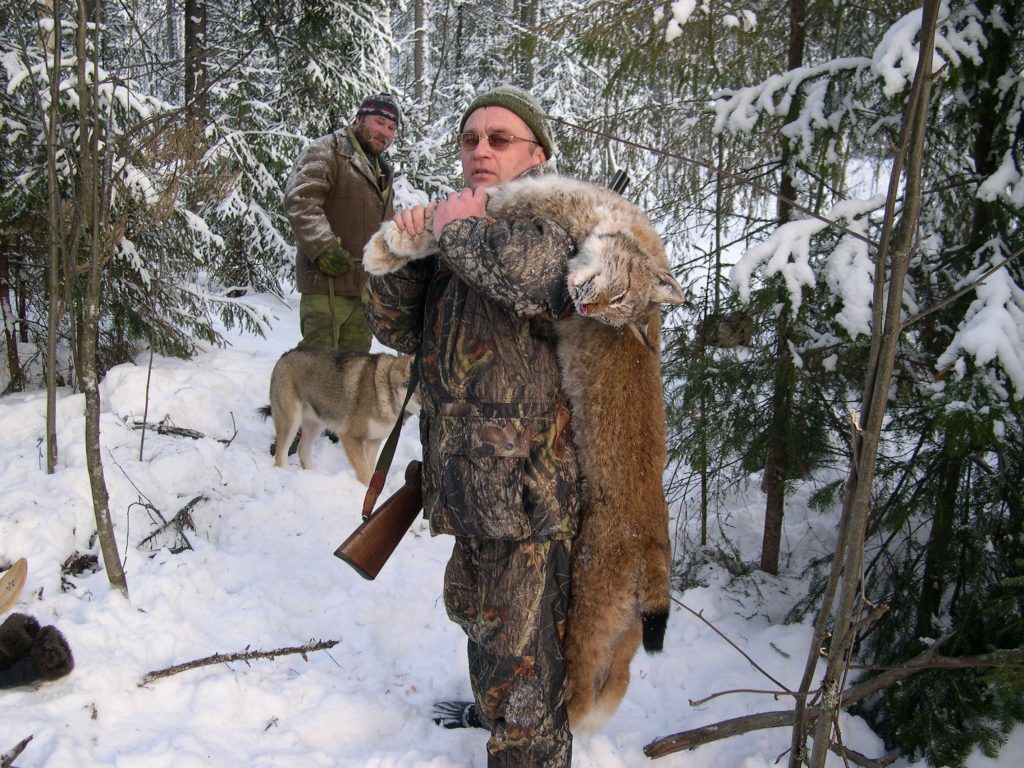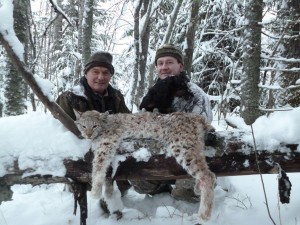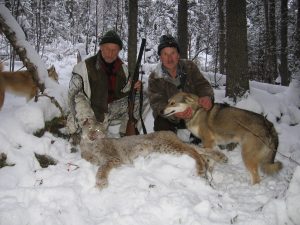Lynx Hunting in Russia

Location: St. Petersburg, Karelia
Season dates: November 15 – March 15
Hunting method: Tracking with dogs
Accommodations: Fully equipped hunting lodge
Group size: 1
Price: $6200
An additional day of hunting: $400
Additional trophies: wolf $700, wolverine $1500
Included in the price:
Reception and assistance in St. Petersburg airport; Accommodation in the hunting area; Meals and soft drinks during the hunt; Roundtrip ground transportation airport-hunting area and transportation during the hunt; Services of at least two guides; Services of 1 interpreter in a camp; Field trophy preparation; Gun permit; Invitation letter and voucher; hunting license; CITES permit
Not included in the price:
Insurance of any kind; International and domestic travel before and after the hunt; Preserving, shipping, or transporting of trophies from Russia; Cost of sightseeing tours; Ground transportation unrelated to hunting; Gratuities.
Itinerary:
Day 1: Arrival in St. Petersburg and transfer to the hunting lodge.
Day 2-6: 5 days of hunting
Day 7: Return to St. Petersburg for a flight home.
Details:
Eurasian lynx found in Russian taiga forests is the largest among the species. Mature males can exceed 30 kg (65 lbs). Lynx is almost exclusively hunted with dogs. The best time is early in the middle of the season when the snow cover is not too deep, and the dogs can move freely, or later in the season when it is deep enough to use snowmobiles. Temperature can be as low as -25C to – 40C (-10F to -40F). This hunt has been 100% successful. Additional trophies include wolf or wolverine.
Request information

Eurasian lynx is approximately 20% larger than North American lynx, but behavior and biology are identical. Lynx is one of the most challenging animals to hunt because lynx is very territorial and requires a large area to survive. The territory necessary for the Eurasian lynx to survive varies from 8 sq. mi. in the Western parts of Russia to 170 sq. mi. in Siberia. The population density depends on the food source availability. In European parts of Russia, lynx feed primarily on plentiful hares and birds.

Hunting the elusive lynx is very difficult, challenging, and interesting. Lynx can be taken occasionally during the driven hunts for moose and boar. However, the best way to ensure a high probability of success is to use specially-trained dogs. We offer lynx hunts in either European North-West or Southern Siberia. Snow cover is essential for a successful hunt. Otherwise, finding a fresh trail becomes a serious challenge. The best time to hunt lynx is in early winter when the snow cover is not too deep to restrict the movement of the dogs. In late winter, hunters should expect to use snowmobiles and sometimes snowshoes. Once taking a trail, dogs would usually tree a lynx within a few hours. If lynx gets treed in the area inaccessible by snowmobile, snow shows may become useful. Placing a shot is usually easy. Sergei Shushunov & Russian Hunting Agency organizes lynx hunts in Russia’s St. Petersburg, Kirov, and Karelia provinces.

